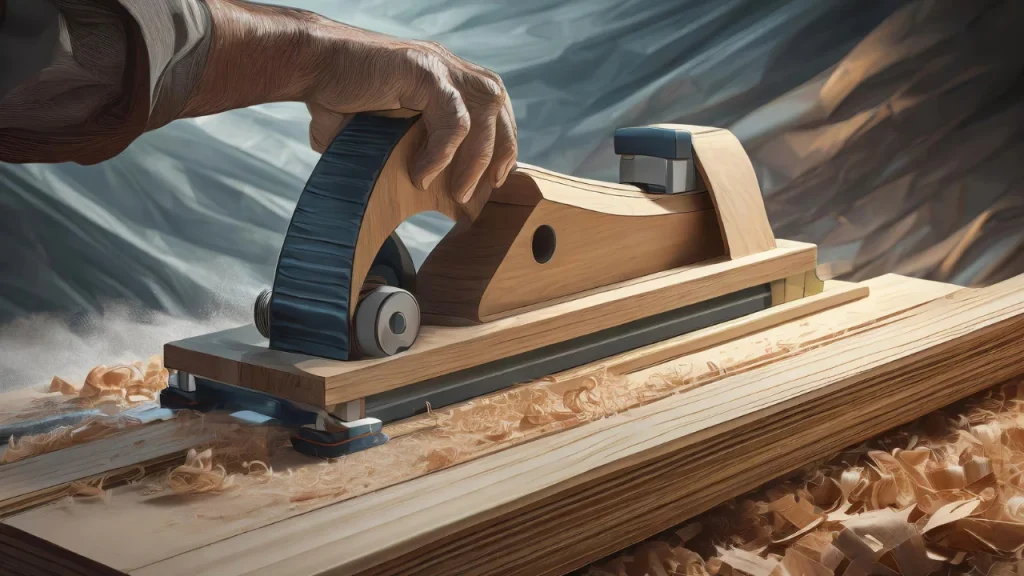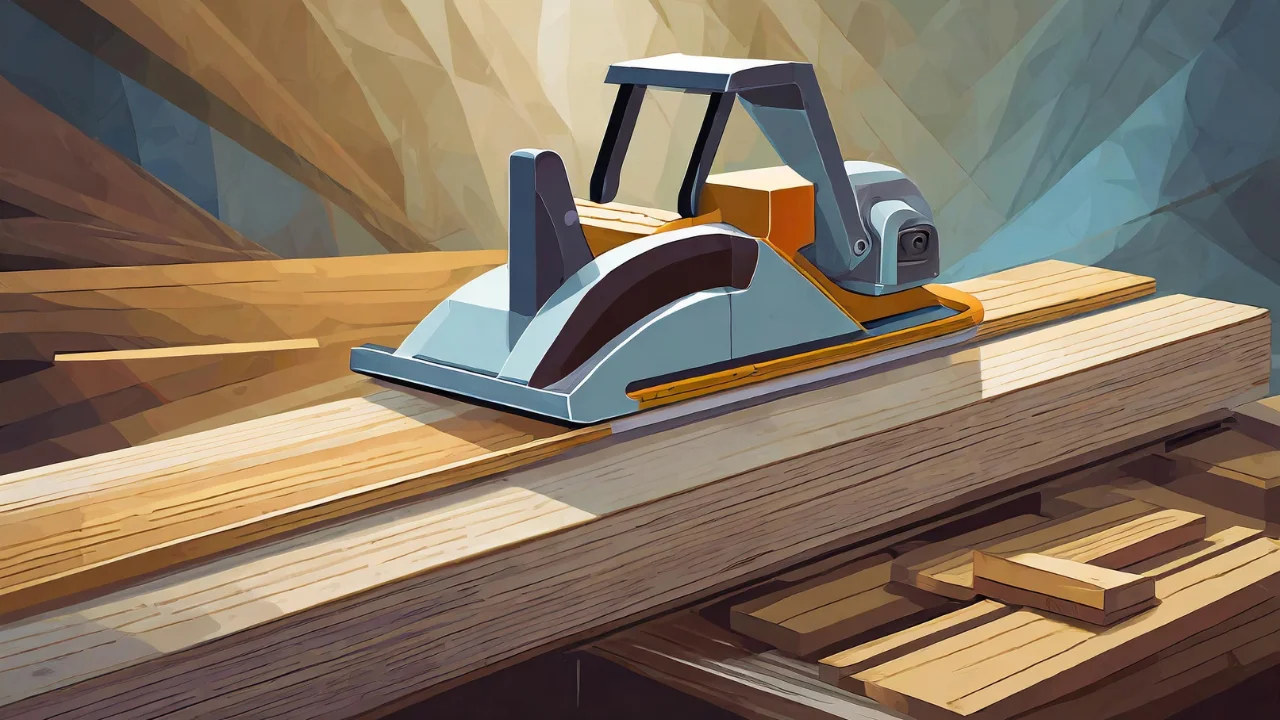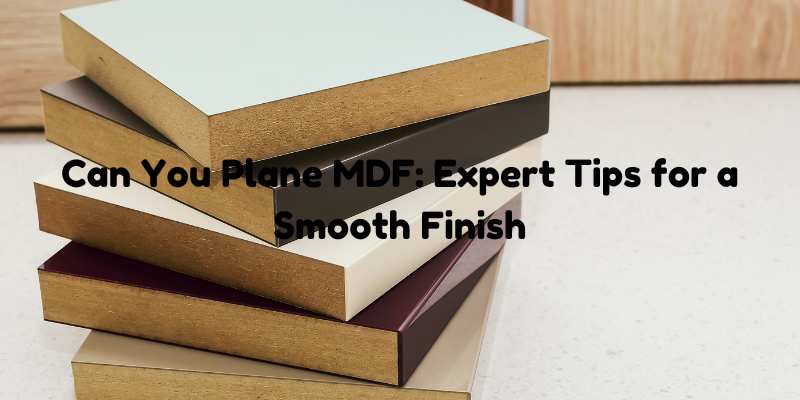Yes, you can plane MDF. But it’s not always the best idea.
MDF, or Medium Density Fiberboard, is a common material used in carpentry and furniture making. While MDF is versatile and easy to shape, it has its downsides. Planing MDF can create a lot of dust. This dust can be harmful if inhaled.
MDF also tends to chip and splinter easily. This can ruin your project if you’re not careful. So, while planing MDF is possible, it’s important to know the risks and take proper precautions. In this blog post, we’ll explore the pros and cons of planing MDF. We’ll also offer tips to make the process smoother and safer. Let’s dive in and see if planing MDF is right for your project.
Challenges Of Planing Mdf
MDF, or Medium Density Fiberboard, is made from wood fibers. These fibers are mixed with resin and wax. The mixture is then compressed into boards. This makes MDF dense and uniform. But, it also makes it hard to work with. The resin and wax can gum up tools. Sharp tools are a must for this material. Dull tools will not work well.
Planing MDF can cause many problems. First, it produces a lot of dust. The dust is very fine. It can be harmful if inhaled. Always wear a mask when working with MDF. Second, the edges can chip easily. This happens when the tool is not sharp enough. Third, the resin can cause the tool to overheat. This can damage the tool. Regular maintenance is needed. Always clean your tools after use. This will help them last longer.

Credit: prowoodplaner.com
Necessary Tools
Planing MDF requires specific tools for a smooth finish. Essential tools include a sharp hand plane and a dust mask for safety. Proper techniques and equipment ensure clean, precise results.
Hand Planes
Hand planes can shape MDF with care. It’s best to use a sharp blade. A smooth cut is important. Work slowly to avoid chipping. Keep your blade clean. Check your progress often. This helps keep control. Small movements work best. Sand edges for a fine finish. Always use safety gear. Protect your eyes and hands.
Power Planes
Power planes are faster. They need a steady hand. Set the depth carefully. Too deep can damage MDF. Move evenly across the surface. Clean the plane often. Dust can clog it. Safety is key. Use goggles and a mask. MDF dust can be harmful. Check your work often. Smooth out any rough spots. Practice makes perfect.
Preparation Steps
Wear safety goggles to protect your eyes. MDF dust can harm them. Use a dust mask. MDF dust is fine and can be harmful. Gloves can protect your hands from splinters. Make sure your workspace is well-ventilated. This helps reduce dust in the air. Keep a first aid kit nearby. It’s better to be safe.
Clean your work area. A tidy space prevents accidents. Secure the MDF piece to your workbench. This stops it from moving. Have all your tools ready. This saves time and effort. Use clamps to hold the MDF steady. This ensures precise planing. Check your plane’s blade. It should be sharp for smooth cuts. Keep a dust collector close. This helps manage the dust.

Credit: mellowpine.com
Planing Techniques
Using the right angle is key. A low angle works best for MDF. This helps prevent chipping. Always keep the plane blade sharp. A dull blade can cause rough cuts. Smooth cuts need a sharp blade.
Apply even pressure. This helps maintain a smooth surface. Do not press too hard. Light pressure is enough. Consistent pressure avoids gouging the MDF. Move the plane at a steady speed. Fast movements can cause mistakes.
Achieving A Smooth Finish
Sanding MDF is important. Use fine-grit sandpaper. Sand the surface gently. Work in a circular motion. Avoid sanding too hard. It can damage the MDF. After sanding, clean the dust. Use a damp cloth or vacuum. This prepares the surface for the next step.
Sealants protect MDF. They prevent moisture damage. Apply a thin layer. Use a brush or roller. Let it dry completely. Sand lightly after drying. This ensures a smooth surface. Repeat if necessary. A well-sealed MDF lasts longer. It looks better too.
Common Mistakes
Tear-out happens when the wood splinters. It’s common with MDF. To avoid this, use sharp blades. Make sure they are clean. Slow and steady passes help too. Always cut along the grain. Don’t rush the process. Patience is key.
Chipping can ruin a project. To prevent chipping, support the MDF. Use clamps to hold it steady. A zero-clearance insert can help too. Also, use a scoring blade. It cuts a shallow line first. This line prevents chips.
Maintenance Of Tools
Blades get dull over time. Sharp blades are crucial for clean cuts. Use a sharpening stone or machine. Follow the angle of the blade. Take your time to avoid mistakes. Sharp blades reduce effort and improve results.
Keep tools clean for better performance. Wipe blades after use. Remove dust and debris. Use a brush or cloth. Avoid water to prevent rust. Clean tools last longer and work better.

Credit: prowoodplaner.com
Frequently Asked Questions
Can You Use A Plane On Mdf?
Yes, you can use a plane on MDF. However, MDF is softer than wood. Use a sharp blade for clean cuts.
What Tools Work Best On Mdf?
MDF works best with sharp tools. Use carbide-tipped blades and bits for smooth and accurate cuts.
Is Mdf Easy To Work With?
Yes, MDF is easy to work with. It’s smooth and uniform, making it ideal for various projects.
How Do You Smooth Mdf Edges?
To smooth MDF edges, use fine-grit sandpaper. Sand gently to avoid damaging the material and achieve smooth edges.
Conclusion
Planing MDF is possible, but requires care. Use sharp tools for best results. Sand edges after planing to smooth surfaces. Avoid excessive force to prevent damage. Proper ventilation reduces dust hazards. MDF can be tricky, but patience helps. Practice and the right approach make it manageable.
Always prioritize safety while working. Good preparation ensures better outcomes. Happy woodworking!

